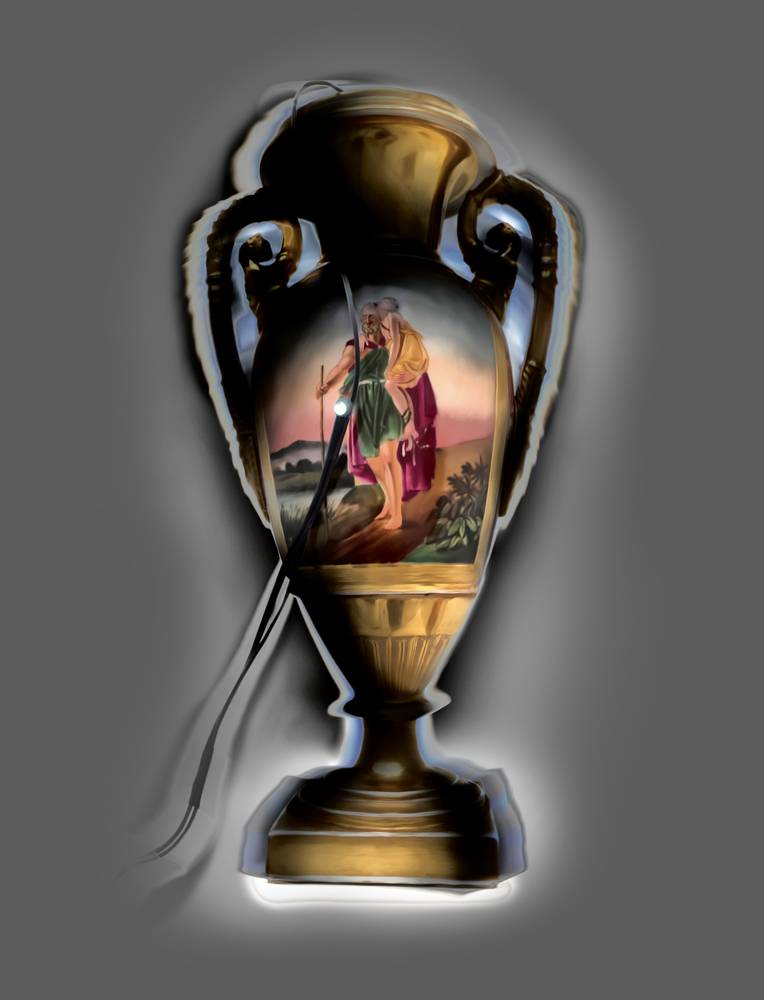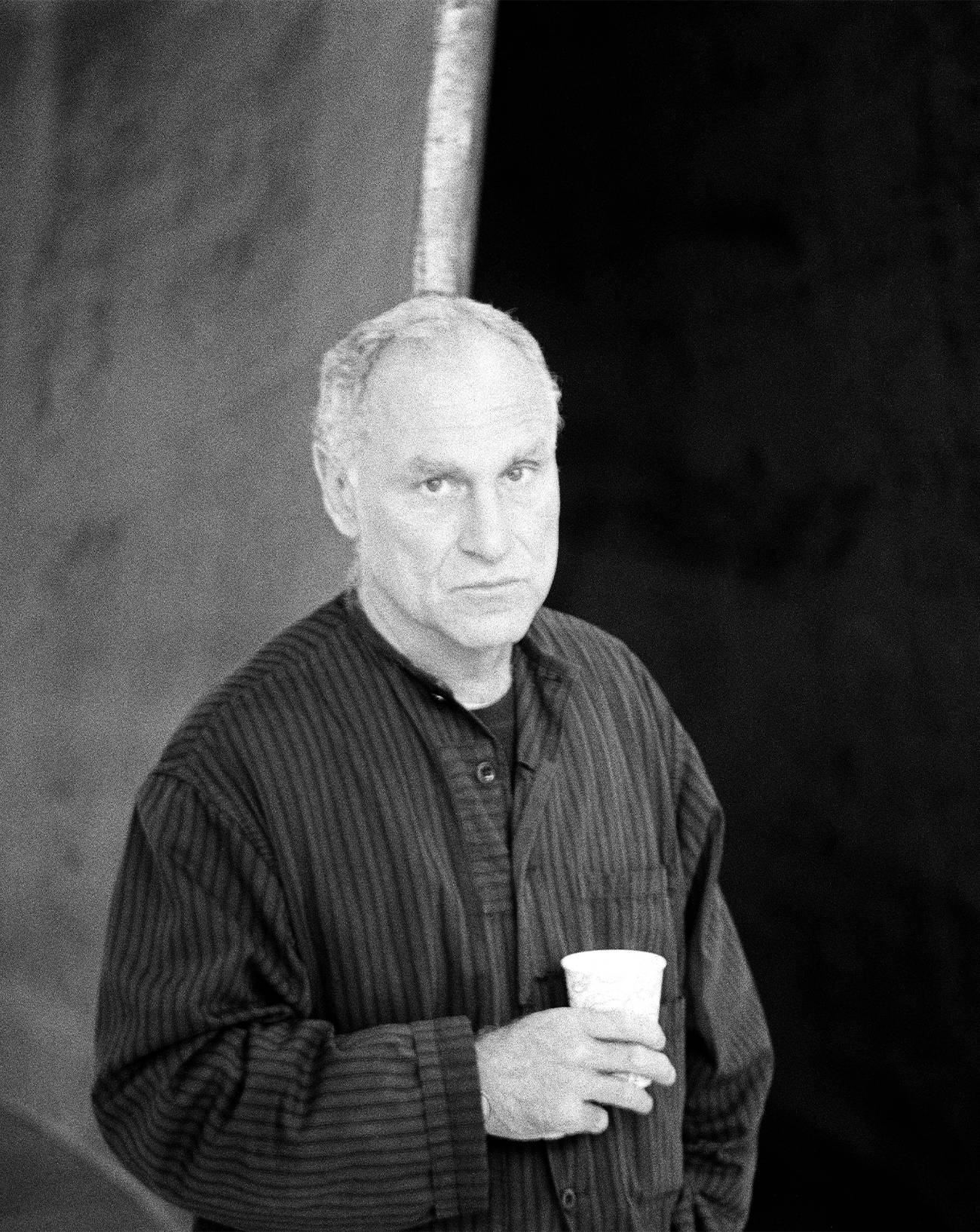![<p>“Compositions for Mouths (Songs My Mother Taught Me)” [2018]. Colour print on aluminium.</p>](https://numero.twic.pics/images/gallery/50/oliver-beer-thaddaeus-ropac-met-new-york-vessel-orchestra-numero-magazine-2.jpg)
“Compositions for Mouths (Songs My Mother Taught Me)” [2018]. Colour print on aluminium.
![<p>“Compositions for Mouths (Sunara and Alina)” [2019]. Colour print on aluminium.</p>](https://numero.twic.pics/images/gallery/50/oliver-beer-thaddaeus-ropac-met-new-york-vessel-orchestra-numero-magazine-1.jpg)
“Compositions for Mouths (Sunara and Alina)” [2019]. Colour print on aluminium.
The powers of a household god are by definition limited and local. The paradoxical idea of a finite divinity – supernatural powers tethered to social and material circumstances – underpins Oliver Beer’s research into the relationship between the universal properties of sound and the cultural constructions of music. Playing on the tension between a humanist faith in the capacity of art to transcend boundaries and an acknowledgement of the insurmountability of certain cultural differences, he interrogates the capacity of any work of art to carry meaning beyond its place of origin. For his recent show at Thaddaeus Ropac’s Paris space, Beer presented a motley selection of what appeared to be decorative objects, historical artefacts and domestic knickknacks on plinths of varying heights. Microphones captured and amplified the ambient frequencies rattling around the objects’ hollow interiors – on the same principle as putting one’s ear to a conch shell, and hearing a rumble that resembles the sea – to generate gentle, humming feedback loops. These “voices” were arranged by the artist into a harmonious choir that filled the gallery with inhuman music. These Household Gods, the show’s title implied, had stories to tell us.
The four rooms were filled with items retrieved from the houses of the artist’s grandmother, father, mother and sister and bore testament both to the individual personalities of the collectors and to the wider culture in which their collecting took place: a particularly English sensibility is revealed by the international eclecticism, which was made possible by Britain’s empire. Beer trades on the conflict between the material histories of these objects – the fact that any Westerner’s appreciation of their aesthetics must be qualified by acknowledgement of the colonial violence that made such collections possible – and the archetypal Enlightenment conviction that music operates independently of such earthbound considerations, being transcendent, universal and divine.
![“Household Gods (Grandmother)” [2019]. 16 vessels, 2 speakers, 18 plinths.](https://numero.twic.pics/images/flexible_grid/100/oliver-beer-thaddaeus-ropac-met-new-york-vessel-orchestra-numero-magazine-5.jpg?twic=v1/quality=83/truecolor=true/output=jpeg)
![“Household Gods (Grandmother)” [2019]. 16 vessels, 2 speakers, 18 plinths.](image:https://prod1.numero.com/sites/default/files/images/flexible_grid/100/oliver-beer-thaddaeus-ropac-met-new-york-vessel-orchestra-numero-magazine-5.jpg)
That conflict will be brought to the fore in Beer’s show at the Met Breuer this summer, for which he rifled through the Met’s vast collections to find 32 pieces with resonant frequencies corresponding to notes on the chromatic scale. It’s an Oulipian strategy that, because it foregrounds a characteristic never previously considered important to the appreciation of these objects, generates unexpected relationships, serving to break down the established taxonomies which would separate, for example, a First World War artillery shell and an ancient-Egyptian pot.
This repurposing also raises the question of what constitutes a work of art. We are now licensed to treat as art any object that has been separated from its function, removed from the local set of beliefs that gave it meaning, and rehoused in an institution. Thus an African headdress as much as a Greek amphora becomes a “work of art” when divorced from its original context, and the same is true, since Marcel Duchamp, of modern domestic objects (Duchamp’s formative influence on Beer’s practice is slyly acknowledged by the inclusion in Household Gods of a Japanese Arita porcelain urinal). The classical tradition that invented household gods also put forward that people, places and things had their own animating spirit, and despite Duchamp’s best efforts Western culture has never quite escaped a corollary faith in the auratic power of objects and the divinity of individual talent. Duchamp used the urinal to illustrate that the aura of a work of art was best understood as a sleight of hand or magic trick. The animation or “activation” of objects in Beer’s installations might be understood as a comparable kind of re-enchantment: certainly, to transform a ceramic pissoir into an artwork and/or musical instrument is a particular kind of alchemy. These objects are reentered into a system that makes sense of them, given a new home.
Numéro art asked the Adulte Adulte graphic duo to reinterpret Oliver Beer’s sound objects, presented at the Thaddaeus Ropac Gallery. The notes that escape from it make their shape resonate.


Since the Met’s collection is a history of violence, given its basis in the removal – by physical force or economic power – of objects from their place of origin, the literal instrumentalization of these pieces in the service of a musical composition raises difficult questions. Sound is currently a popular metaphor in contemporary art for a politics that might unite diverse voices in a productive polyphony, and so it strikes me as important that Beer will relinquish control over the orchestra he has put together by inviting fellow musicians to perform pieces for the installation (each of the objects will be wired up to a keyboard, allowing the composer to “play” them). Crucial, too, that anyone attending those concerts will be able to confront the material histories underpinning the music – physical objects damaged, in many cases, by their removal from home.


Oliver Beer: Vessel Orchestra, from July 2 to August 11, The Met Breuer, New York.








